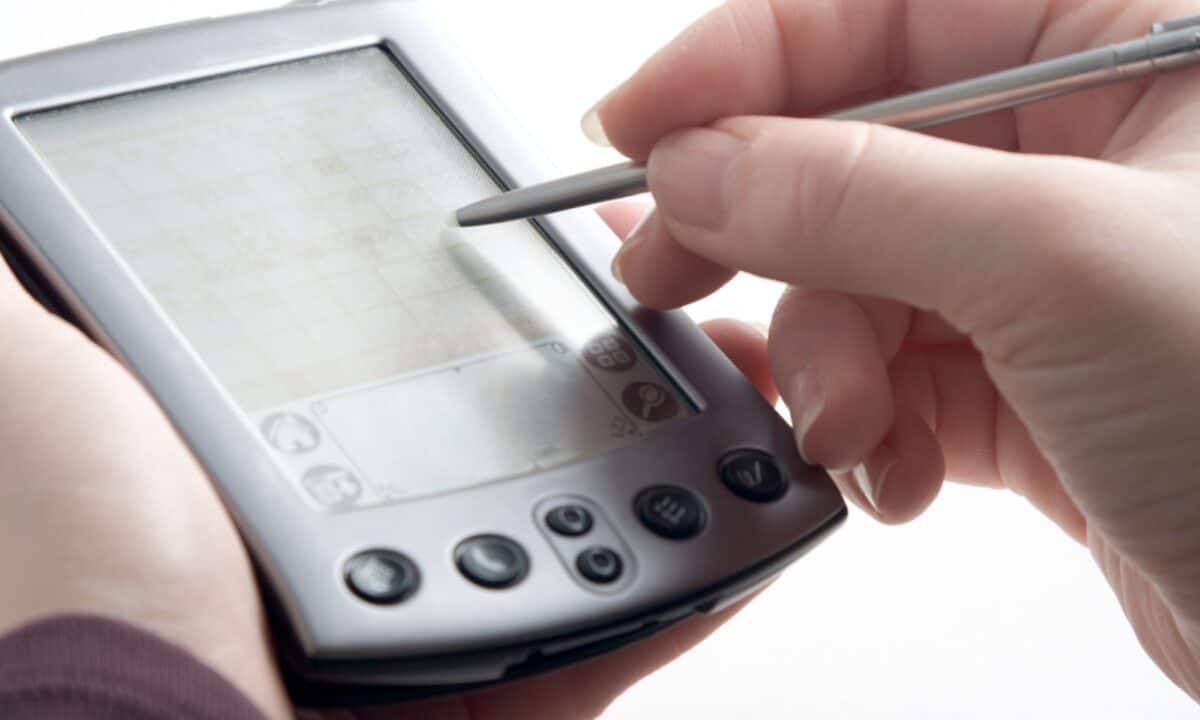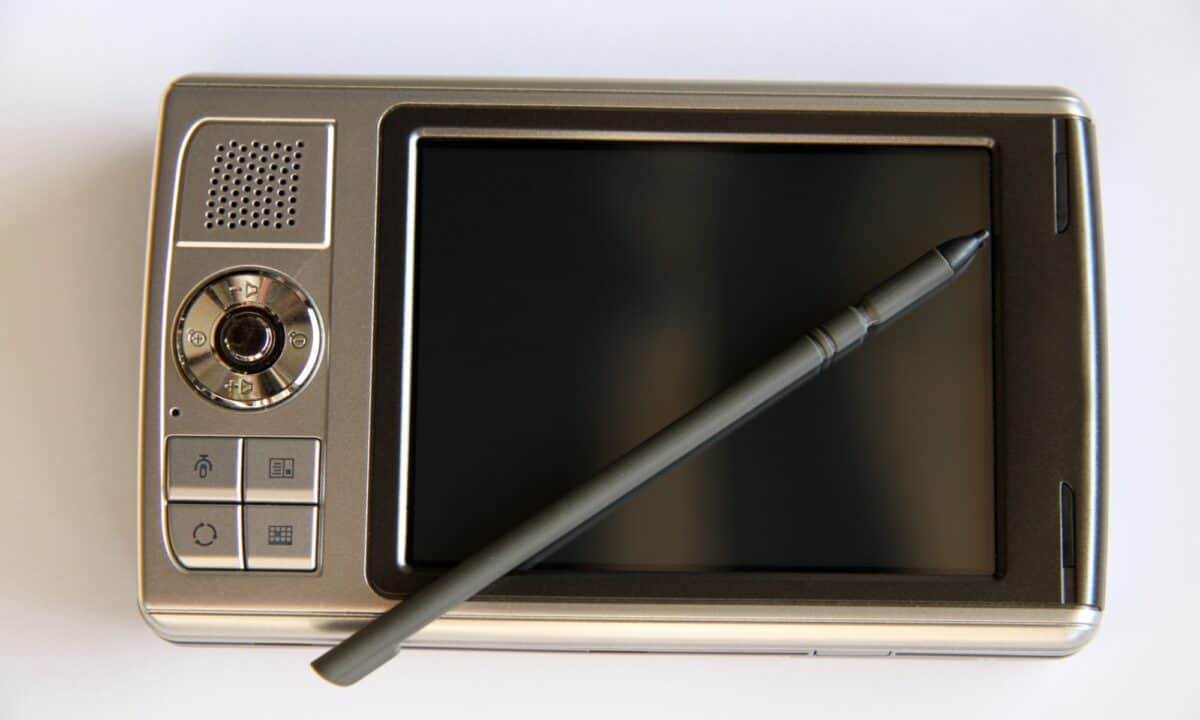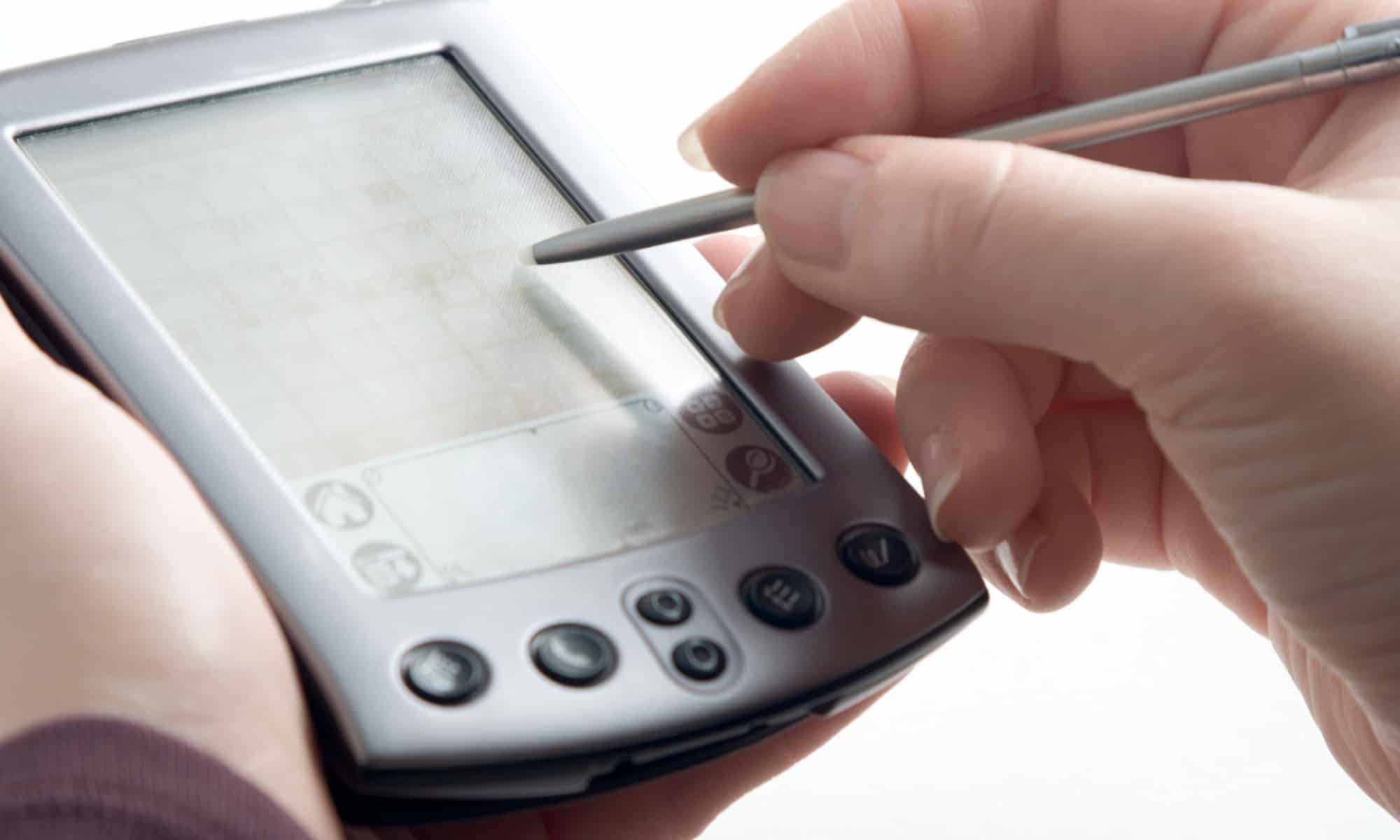Palm is the company which developed personal digital assistant software. It was founded in 1992 by Jeff Hawkins and initially developed software for the Zoomer. Although the Zoomer didn’t gain much popularity, Palm’s best-known device soon became the PalmPilot. The PalmPilot had all of the organizational functions smartphones have like calendars, email, contact lists, calculator function, and web browsers. However, Palm also developed the Treo which was an early smartphone model which featured a small LCD screen with a physical keyboard.
However, the release of new smartphones such as the iPhone eventually led to Palm’s software becoming less popular. The company was eventually bought by HP in 2010 and was subsequently dissolved. Although the Palm brand was sold to TLC four years later, the Palm products are now discontinued.
Quick Facts
- Year Founded
- 1992
- Founders
- Jeff Hawkins, Donna Dubinsky, and Ed Colligan
- Industry
- Consumer Electronics
- Headquarter
- Sunnyvale, California
- Key People
- Jeff Hawkins, Donna Dubinsky, and Ed Colligan
- Notable Products
- PalmPilot, Pre, Pixi, Treo, Centro
- Website
- https://www.palm.com
Read on to explore the full history of Palm, including details of how it began, its most important inventions, and much more.
The History of Palm: What to Know

Palm, Inc. is the company behind the personal digital assistant software and hardware throughout the 1990s. With a storied history, the company’s founding team of Jeff Hawkins, Ed Colligan, and Donna Dubinsky held up the PDA market with innovative hardware and software.
Starting with the PalmPilot, a handheld digital assistant device that resembles an early smartphone, the company launched the mobile market passed standard cell phones. It started by developing software for a device by Casio for Tandy known as the Zoomer. Palm developed the personal information management system known as PIM.
The Zoomer was a market failure. The idea was ahead of the technology to support it, but Palm didn’t give up. Supported by revenue from software licensing fees for HP devices and the Graffiti handwriting recognition software, Palm survived until it gained the backing of U.S. Robotics Corp in 1995. Unfortunately, the company was bought again in just two years by 3Com.
3Com caused a major disruption at the founders by focusing the company on market-share value rather than technological development. The early tech bubble hadn’t popped yet and 3Com believed the market group to be infinite. Dubinsky, Hawkens, and Colligan knew better. After a year with 3Com at the helm, the three founding members left from Handspring.
Handspring released their lineup of devices known as the Visor and later the first Treo. Meanwhile, 3Com dealt with a massive blow as the tech bubble popped. Stock shares went from $95.06 to $6.50 in only a year. Palm recognized their fault and set up a wholly-owned subsidiary to handle the development and licensing of Palm OS. This division allowed Palm OS to flourish even as Palm itself fell apart.
palmOne kept at the battle and in May 2005, bought PalmSource’s remaining share of the ‘Palm’ trademark. The company celebrated the purchase by rebranding back to Palm, Inc.
By 2003, Handspring was able to get the hardware division from 3Com’s company to join them. Handspring was then renamed to palmOne, Inc. to represent the reunion.
The Founding of Palm: How It Happened
Palm was created as a software company by Jeff Hawkins. Hawkins’s first hires, Donna Dubinsky and Ed Colligan helped him to create the PIM software for Zoomer devices. The idea of a handheld digital assistant continued to evolve with them even after the failure of the Zoomer.
The company’s founders continued to develop their idea for PDA devices. Their development was so valuable that it prompted businesses to continually purchase and revive it.
Palm Through The Years
1992-1995
In 1992, Jeff Hawkins recruited Ed Colligan and Donna Dubinsky to help with the creation of software applications for a device called the Zoomer. The Zoomer by Casio for Tandy was one of the first personal digital assistant devices on the market. Like the first, it didn’t have a lot of functionality. Palm and Geoworks developed the software that made them useable ‘computers’.
The company provided what was called the PIM software. PIM stands for personal information manager. It is a type of software application that acts as a personal organizer. While that may seem basic now, these programs had to be created from scratch to a custom OS. Palm’s PIM included features for:
- Address books
- Alerts
- Calendar dates
- Education records
- Email addresses
- Fax communications
- Itineraries
- Instant message archives
- Legal documents
- Lists
- Medical information
- Passwords and login authentication
- Personal files: documents, music, photos, and videos
- Diary/journal/memos/notes
- Recipes
- Reference materials
- RSS/Atom feeds
- Reminders
- Voicemail
The Zoomer didn’t make it. Palm made it off the sinking ship. They had begun generating revenue by selling software for HP devices and through the Graffiti handwriting recognition software. After a short time floating without the backing of the Zoomer platform, Palm was purchased by U.S. Robotics Corp.
1995-2002
The two years with U.S. Robotics Corp ended up a limbo as the company was once again purchased, this time by 3Com. Palm spent one year as a subsidiary of 3Com before the founding members of Palm found themselves in a large disagreement. Jeff Hawkins, Donna Dubinsky, and Ed Colligan left to create a new company named Handspring.
Handspring fought as a competitor to the 3Com-owned Palm company. Handspring produced a series of PDA devices known as the Visor. By 2002, Handspring had already released the first Treo device. Meanwhile, 3Com had made Palm an independent publicly traded company. At the stock’s all-time high, it hit $95.06 per share.
Then the tech bubble popped. By mid-2001, Palm’s shares had dropped to $6.50. It had officially become the worst-performing PDA manufacturer on the NASDAQ index. In need of a new direction, Palm started to rethink development. In 2002, it set up a subsidiary to develop and license Palm OS named PalmSource.
2002-2004
PalmSource picked up value faster than its parent company. It spun off to become an independent entity. 3Com was losing track of its purpose. In 2003, the hardware division left and merged with Handspring, the company made from the founders of Palm. Handspring renamed itself palmOne, Inc.
2005-2009
In 2005, palmOne bought out PalmSource’s share of the ‘Palm’ trademark for $30 million. In celebration, palmOne launched a rebrand. The company reverted to the Palm, Inc. name and reclaimed the share ticker symbol PALM.
Without the ‘Palm’ trademark, PalmSource suffered a heavy loss. ACCESS, a company that worked specifically with mobile and embedded web browsers, purchased PalmSource for $324 million.
Palm, Inc. went into immediate development in partnership with Microsoft and Verizon Wireless to release the first Windows Mobile smart device, the Treo. The contracts through Verizon and Microsoft taught Palm the lessons of the loss of control when developing with the restrictions of others. The company decided to get a hold of the rights to the operating system they had already developed, Palm OS.
ACCESS was unwilling to sell Palm OS to Palm outright, but the two companies were able to negotiate an irrevocable license agreement that essentially gave Palm ownership of the operating system without the original licensing rights. With the rights to develop Palm OS Garnet, the Palm development team went right to work creating their vision of what the devices should be.
In 2008, Palm’s CEO Ed Colligan announced that they would no longer develop handheld PDAs. Instead, Palm would begin producing Palm Pre smartphones equipped with the webOS operating system. Palm followed up the announcement by showcasing the first Palm Pre at the Consumer Electronics Show in January of 2009.
The move increased Palm’s stock, but it was too late. Apple had released the iPhone and Android was around the corner. Palm’s WebOS had become outdated.
2010-2011
By 2010, Palm’s stock had dipped below $4 again. Disheartened, Palm gave up on hardware and sold to Hewlett-Packard for a deal that valued $1.2 billion. What was left of the global business unit was left to manage the development of the webOS software and the webOS-based hardware products.
In February of 2011, HP launched a lineup of devices powered by webOS including the Pre 3, Veer, and TouchPad. They did not do well. They were so unsuccessful that in August of the same year, HP announced it would immediately end production and support of Palm and WebOS. Palm was over. Members of the Palm team began to leave and what remained was organized into a team known as ‘Gram’. HP sold the team and webOS to LG Electronics.
The Palm trademark was finally sold in 2014 to TCL Corporation, known for the Alcatel brand. TCL attempted to revive the device in 2018.
What Are the Most Important Inventions from Palm?

PalmPilot
The PalmPilot wasn’t the first-ever personal digital assistant, or PDA, device. It was the first successful PDA. After learning from the failures of the Zoomer, Palm designed a more useful device that was easier to use. The PalmPilot took the world by storm. It was the first PDA that was marketed worldwide successfully.
While it is a less remembered device than the original iPhone, the PalmPilot series of devices was the first iteration of what can be now considered a smartphone. It carried all of the organizational functions smartphones have like calendars, email, contact lists, calculator function, web browsers, and all kinds of custom applications.
This device was in direct competition with early BlackBerry devices and even led to some of the first Windows Mobile devices with four different editions of the Treo.
webOS and Palm OS
Before Palm was involved in the hardware industry, it was a software company. It developed the key functions of smart devices that make them useful to everyday people. webOS was the full operating system used to support their mobile devices until they could purchase the rights to Palm OS Garnet which had been developed by Palm, but lost during prior acquisitions.
Palm experimented with Windows Mobile and their webOS software before finally reacquiring Palm OS rights. Garnet gave Palm’s devices major software improvements that stepped ahead of PDA software at the time. Palm OS retired webOS. Then, iOS and Android retired Palm OS.
Treo and Centro
The Treo devices were a smartphone model in the early days of mobile technology. They featured a small LCD screen with a physical keyboard packed across a tiny screen. The body was shaped like a wide older cellphone complete with the antennae sticking out of the top until the Treo 680 installed the antennae inside the body, widened the keyboard, and offered a larger screen.
The Centro came about after the company purchased an irrevocable license to develop, modify, and distribute Palm OS Garnet. It was released in 2007 and saw mild success before the release of the iPhone in 2008 which changed the mobile landscape dramatically.
How Did Palm Make Money?
Throughout Palm’s existence, it made money in three different ways. The first was software development and licensing. The company was paid to develop software and then paid for the right to use that software. Eventually, it began to make money in the hardware industry by developing PalmPilot PDAs. It was also a publically traded company for some time which allowed them to make money through investments.
Ultimately, the software licensing fees were the stream of revenue that kept the company alive for as long as it stayed.
Palm Acquisitions
Palm has made only one acquisition during its independent periods. However, it was kept alive for twenty years by going through the changing of ownership.
Purchased by U.S. Robotics Corps
After the Zoomer went belly up, Palm was only able to stay afloat for a short time through software contracts with HP and Apple Newton. It proved to be less than adequate. In 1995, it was acquired by U.S. Robotics Corp.
3Com Takes Over
After two short years, U.S. Robotics Corp was eaten by a larger shark, 3Com. 3Com set about rearranging the efforts of the company and the direction of development. The founding members were unhappy with the direction changes 3Com wanted to make. So, they left to form Handspring.
Without them, 3Com found major success in changing the direction of the company, at least with stock prices.
PalmSource
In January 2002, 3Com created a subsidiary named PalmSource to develop and license Palm OS. PalmSource was able to split off as an independent entity. In October of 2003, the hardware division of 3Com’s company reformed with Handspring under the name palmOne, Inc.
palmOne Becomes Palm, Inc.
By 2005, palmOne raised enough to purchase PalmSource’s share in the ‘Palm’ trademark. The purchase cost them $30 million. By July that year, palmOne relaunched the company with the brand reverting to Palm, Inc. In what may be considered Palm’s only acquisition, the company rose from the ashes.
ACCESS Buys PalmSource
PalmSource may have sold its shares to Palm, Inc., but the company still had ownership of development and licensing to Palm OS. ACCESS, a company specializing in mobile and embedded web browsers, bought PalmSource for a whopping $324 million. ACCESS became the owner and licenser of Palm OS.
Buying Back Garnet
After an attempt to create Windows Mobile devices with the release of the Treo 700w, the company decided it would be better to have more control over the software of its devices. As the company was already intimately familiar with Palm OS, Palm, Inc made a deal with ACCESS to purchase an irrevocable license to use and modify Palm OS Garnet’s source code, as well as ship self-branded products with OS, installed on them without paying royalties.
With control of the software and hardware development and production, Palm was once again in total control of its products.
HP Buys Palm
In 2010, company stock tanked to below $4. The company had a great run, but it felt defeated. Hewlett-Packard swept in to purchase the company at $5.70 a share which equaled a $1.2 billion acquisition. What was left became the webOS global business unit. HP continued using webOS products for a year before deciding to try a different direction.
TCL Buys Trademark
At the end of 2014, HP sold the trademark and all related intellectual properties to Wide Progress Global Limited, a company controlled by Nicolas Zibell, the regional president of TCL Corporation. TCL is most widely known for Android smartphones under the Alcatel brand name. TCL still owns the Palm trademark and unveiled a new Palm device in 2018.
Palm Notable Controversies
3Com and Palm Employees Disagree
After Palm was bought out by 3Com, the three founders found themselves in disagreement with 3Com’s business decisions. They felt the company was being led in the wrong direction. Instead of staying with the company, they left and formed Handspring.
Palm Resurrects
The company went through a period of ownership through other entities. First by U.S. Robotics Corp, then 3Com. 3Com’s decisions made the company’s stock a valuable asset. It was valuable enough that the company decided to store value by splitting the development of the operating system to a new subsidiary PalmSource. However, 3Com’s obsession with stock and not the development of the technology prompted the three founders of the company to form their own business. Then the tech bubble burst. Shares dropped 90% in a year.
After the fall, Handspring brought back the original company by reuniting the hardware development portion of 3Com’s company and purchasing the rights to its operating system.
The image featured at the top of this post is ©iStock.com/alexeys.

